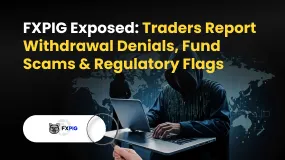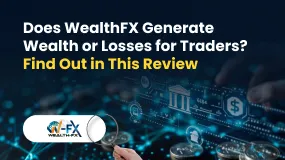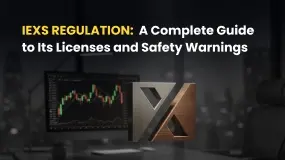简体中文
繁體中文
English
Pусский
日本語
ภาษาไทย
Tiếng Việt
Bahasa Indonesia
Español
हिन्दी
Filippiiniläinen
Français
Deutsch
Português
Türkçe
한국어
العربية
Will the Euro and US Dollar Reach Parity in 2025?
Abstract:Euro-dollar parity sparks debate again as 2025 approaches, with multiple factors shaping the exchange rate outlook.

Since its introduction in 1999, the exchange rate between the euro and the US dollar has been one of the focal points of global financial markets. In the past two decades, the euro and the dollar have only reached parity (1:1) on a few occasions. The most recent instance occurred in 2022, when Russias full-scale invasion of Ukraine triggered an energy crisis in Europe, heightening fears of a recession in the eurozone and pushing the exchange rate to the psychological key level of 1:1. Recent market volatility has reignited discussions about the potential return of euro-dollar parity. The long-term trend indicates that the euro once peaked at $1.60, but under the pressure of energy crises and increasing global economic uncertainty, the exchange rate has remained under downward pressure.

The possibility of the euro and the dollar reaching parity again in 2025 is widely discussed, with many analysts suggesting it is far from impossible. First, the eurozone‘s economic growth lags significantly behind that of the United States, setting the stage for potential exchange rate volatility. Major eurozone economies like Germany and France have faced structural challenges in recent years, including weak manufacturing sectors and insufficient consumer demand. In contrast, the United States has maintained economic resilience through strong consumer spending and corporate profits. Additionally, the eurozone’s interest rates have long been lower than those in the US. The Federal Reserves commitment to fighting inflation has kept US benchmark rates high, further widening the euro-dollar interest rate differential and drawing capital toward dollar-denominated assets.
On the geopolitical front, factors such as potential US tariffs on EU goods and political uncertainty within certain eurozone countries have undermined confidence in euro-denominated assets. As a result, from the perspectives of economic fundamentals and market expectations, the likelihood of the euro falling to parity with the dollar in 2025 is relatively high.

The future trajectory of the euro will not be dictated solely by economic growth and monetary policy; external factors will play a pivotal role in 2025. First, global geopolitical developments will directly impact exchange rates. Any international conflict or changes in trade policy could lead to sharp market sentiment swings, influencing the short-term euro-dollar exchange rate. Additionally, inflation levels and energy price volatility will be crucial variables. If energy prices rise again due to supply chain disruptions, the eurozone, which relies heavily on imported energy, could face greater economic headwinds. Furthermore, market psychology and speculative activities cannot be overlooked. Parity represents a psychologically significant level that could trigger substantial options trading or speculative activities, amplifying exchange rate volatility.
Meanwhile, shifts in the euro-dollar exchange rate will have spillover effects on regional economies. A weaker euro may enhance export competitiveness, but rising import costs could drive inflation higher, impacting consumer confidence. Thus, the euros path to 2025 remains fraught with uncertainty, shaped by a complex interplay of factors both within and beyond the eurozone.
Disclaimer:
The views in this article only represent the author's personal views, and do not constitute investment advice on this platform. This platform does not guarantee the accuracy, completeness and timeliness of the information in the article, and will not be liable for any loss caused by the use of or reliance on the information in the article.
Read more

FXPIG Exposed: Traders Report Withdrawal Denials, Fund Scams & Regulatory Flags
Do you face massive losses due to astonishing spreads at FXPIG? Have you witnessed multiple trade executions by the Georgia-based forex broker even though you wanted to execute a single order? Has this piled on losses for you? Is the FXPIG withdrawal too slow? Maybe your trading issues resonate with some of your fellow traders. In this FXPIG review article, we have shared these issues so that you can introspect them thoroughly before deciding on the best forex trader.

Does WealthFX Generate Wealth or Losses for Traders? Find Out in This Review
The name WealthFX sounds appealing for all those wishing for a rewarding forex journey. However, behind the aspiring name are multiple complaints against the Comoros-based forex broker. These trading complaints dampen the broker’s reputation in the forex community. In this WealthFX review article, we have shared some of these complaints here. Take a look!

FONDEX Review: Do Traders Really Face Inflated Spreads & Withdrawal Issues?
Does FONDEX charge you spreads more than advertised to cause you trading losses? Does this situation exist even when opening a forex position? Do you witness customer support issues regarding deposits and withdrawals at FONDEX broker? Does the customer support official fail to explain to you the reason behind your fund loss? In this article, we have shared FONDEX trading complaints. Read on!

IEXS Regulation: A Complete Guide to Its Licenses and Safety Warnings
When choosing a broker, every trader's biggest concern is safety and trust: is it regulated? For IEXS, the answer isn't simply YES or NO. While the company says it's regulated by trusted authorities, looking closer shows a complicated and worrying situation with mixed evidence and serious risks. What they claim on the surface doesn't match up with official warnings, license problems, and many bad user experiences. This article gives you a detailed, fact-based look into IEXS regulations, breaking down their official licenses, what their trading platform is really like, and real stories from traders who have used it. Our goal is to give you the facts so you can make a smart decision about keeping your money safe.
WikiFX Broker
Latest News
Trillium Financial Broker Exposed: Top Reasons Why Traders are Losing Trust Here
FIBO Group Ltd Review 2025: Find out whether FIBO Group Is Legit or Scam?
Amillex Withdrawal Problems
Is INGOT Brokers Safe or Scam? Critical 2025 Safety Review & Red Flags
150 Years Of Data Destroy Democrat Dogma On Tariffs: Fed Study Finds They Lower, Not Raise, Inflation
CQG Partners with Webull Singapore to Power the Broker’s New Futures Trading Offering
【WikiEXPO Global Expert Interviews】Ashish Kumar Singh: Building a Responsible and Interoperable Web3
Trump: India\s US exports jump despite 50% tariffs as trade tensions ease
IEXS Review 2025: A Complete Expert Analysis
CySEC Flags 21 Unauthorized Broker Websites in 2025 Crackdown
Currency Calculator




